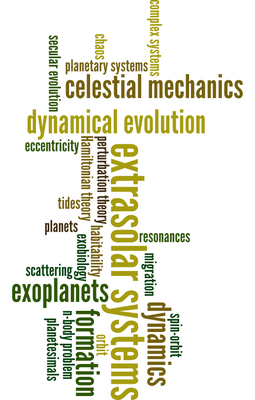Research
Formation
The surprising diversity of the orbital parameters of exoplanets shows that the architecture of many extrasolar systems is remarkably different from that of the Solar system. The broader eccentricity distribution of the detected planets, the existence of hot Jupiters, the strong spin-orbit misalignment of a significant fraction of them and the evidence of mutually inclined orbits (e.g. υ Andromedae) are several characteristics that appear to be at odds with the formation of the Solar system. These observations set new constraints on planet formation theories. Our studies focus on the late stage of the gas phase, where the interactions between the planets and their natal protoplanetary disc play an important role in sculpting the planetary system.
Evolution
Due to the very diversified parameters of the exoplanets, especially their large eccentricities, the analytical methods used for the almost circular and coplanar planets of the Solar System are unfit to describe correctly the orbits. Using both analytical and numerical methods, we aim to study the dynamics of the extrasolar systems, for a wide range of eccentricities and spatial configurations (coplanar or non-coplanar orbits).
Habitability
The omnipresent question of the scientists (and of any human being) is the existence of a planet similar to ours, allowing the development of life. The scientists introduced the concept of habitability to characterize the conditions in which a form of carbon-based life could appear, survive and evolve. This concept is based on constraints coming from different disciplines: from the insolation, the internal heat, the atmosphere, the characteristic periods necessary to start the process of life, to the shape of the orbit and its (dynamical) stability, which also depends on its rotation (spin), on the presence of resonances between the active frequencies and should include possible dissipations (tides, frictions).










